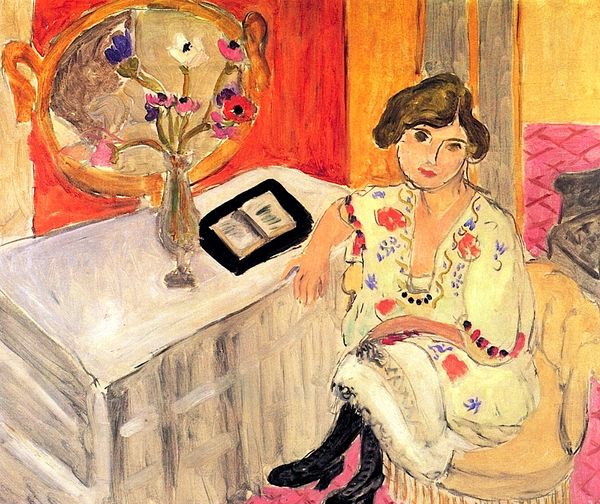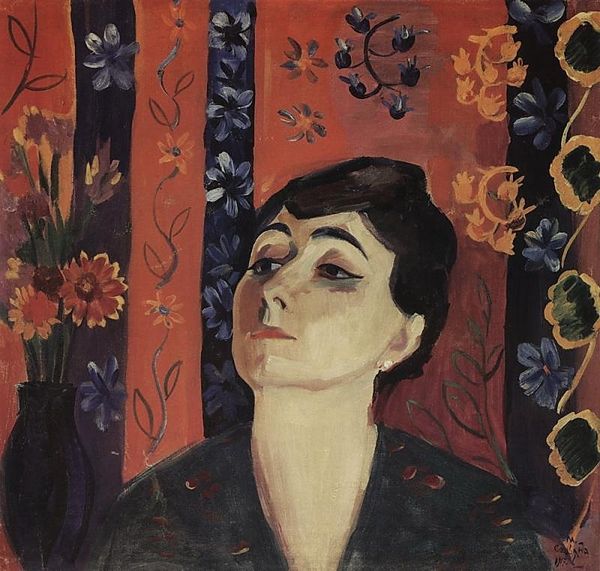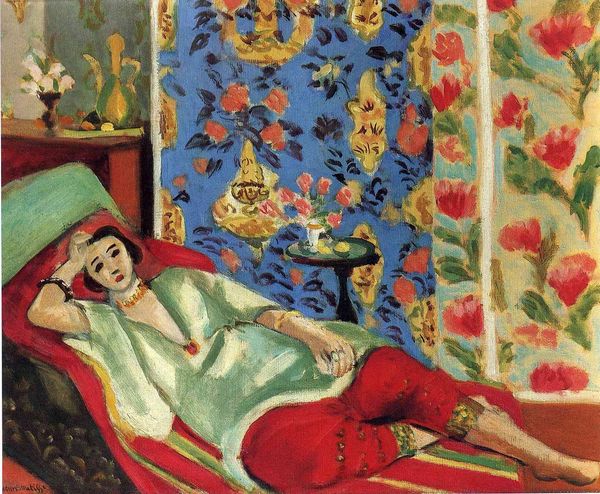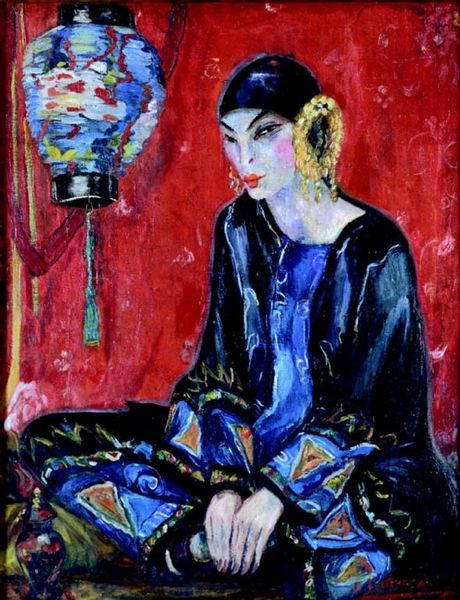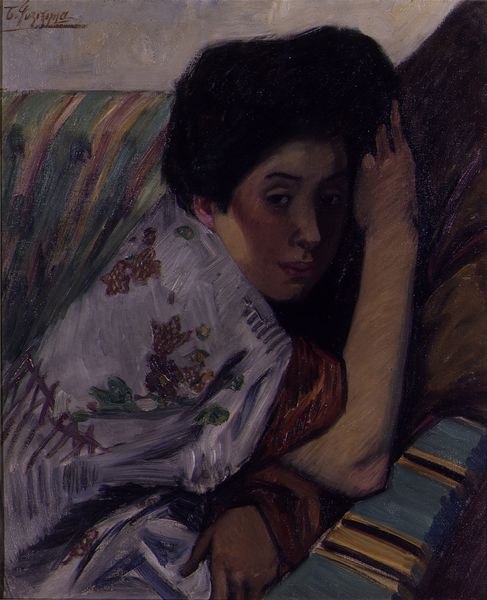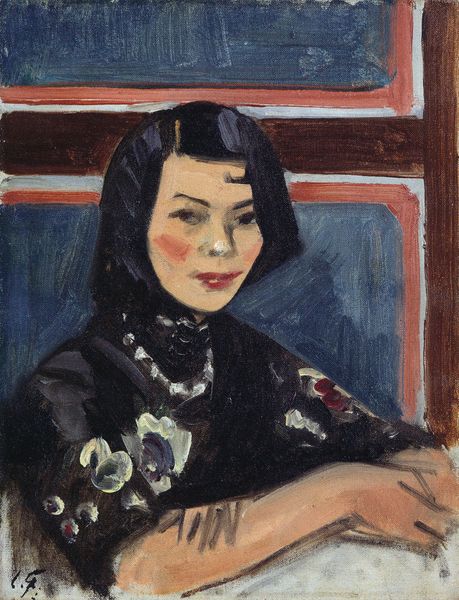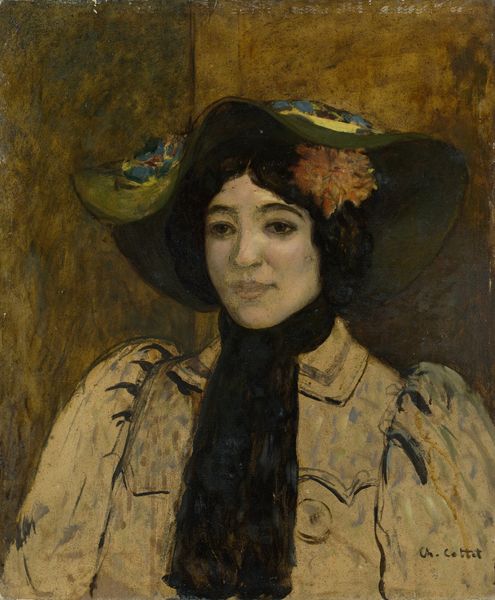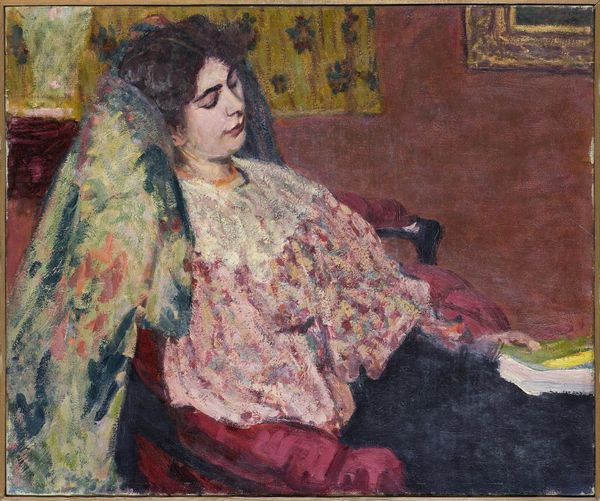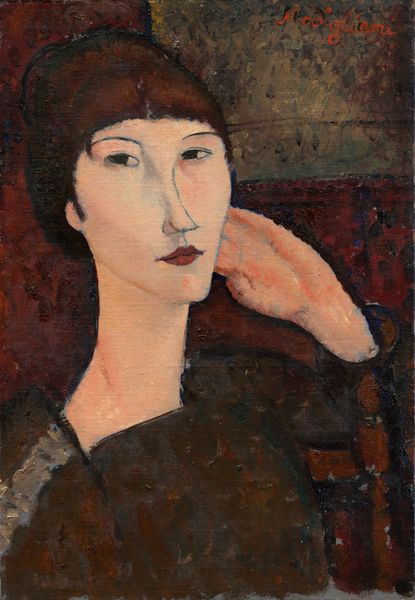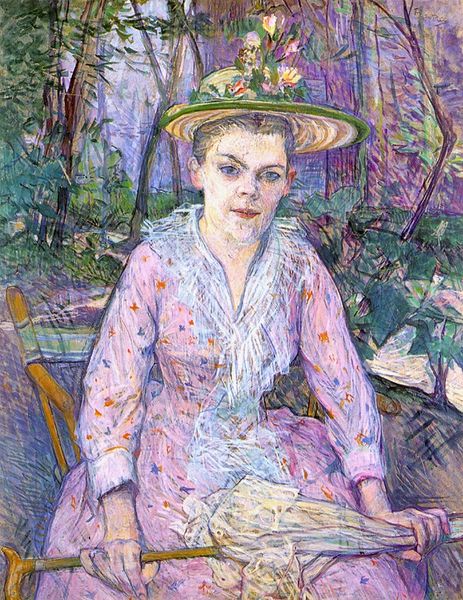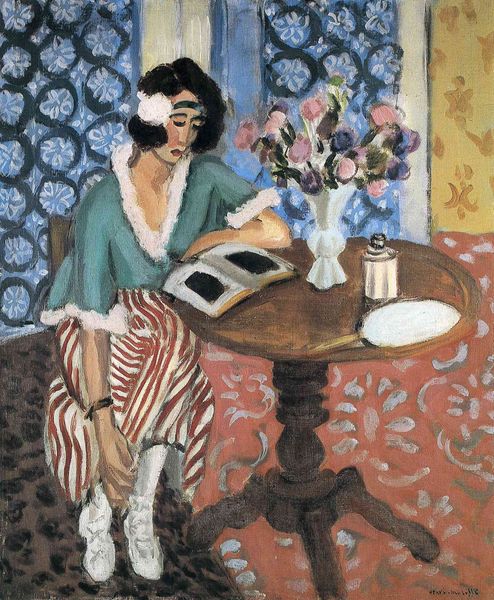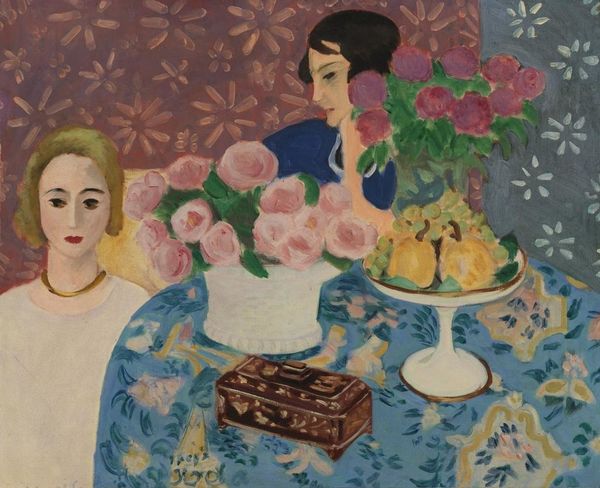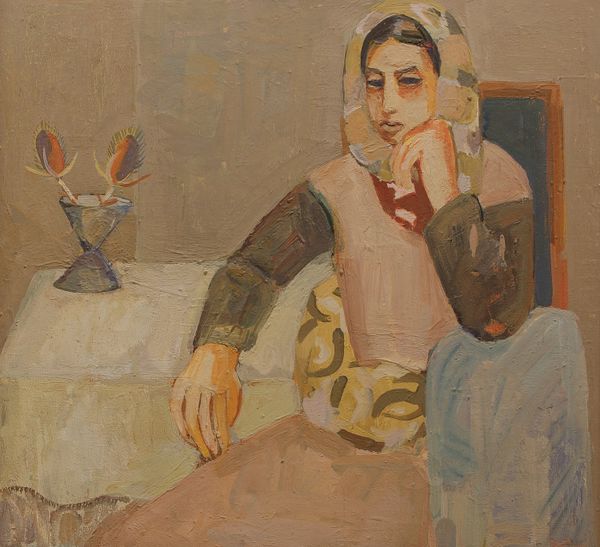
painting, oil-paint
#
portrait
#
painting
#
oil-paint
#
oil painting
#
japonisme
#
portrait art
Copyright: Public domain
Editor: Fujishima Takeji’s painting titled "Perfume" looks like it's from 1915 and seems to use oil paints. I'm immediately drawn to the way the colors blend—everything is bathed in this soft, purple hue. It's very dreamlike, but there is an item that has great definition, and that is the perfume bottle itself. What strikes you most about this portrait? Curator: The first thing that catches my attention is the dialogue between East and West embedded within the painting. Takeji was deeply influenced by European Impressionism and Realism. Here, we see this influence blended with Japanese aesthetics and the Japonisme movement that was very popular in the West. The painting acts as a kind of social document, doesn't it? It displays this fascination with the exotic East but through a distinctly Western painterly lens. Notice her modern hairstyle and her apparent clothing. Editor: That's fascinating. The dress, with what appears to be an interpretation of Chinese silk. The Japonisme connection really makes sense. Were Japanese artists intentionally incorporating these intercultural dialogues into their work, or was it a more subconscious reflection of the times? Curator: That's a complex question! It's likely a bit of both. There was certainly a conscious effort among Japanese artists to engage with Western art movements and prove their artistic sophistication on an international stage. However, the extent to which they fully embraced or subtly subverted Western expectations is an ongoing debate among art historians. But that also opens us to considering for whom the painting was made: was the primary intended audience in the West? Editor: So, in a way, the painting operates on multiple levels - artistic expression, cultural exchange, and perhaps even a negotiation of identity in a changing world. Curator: Exactly! It reveals as much about the cultural dynamics of the early 20th century as it does about the artist himself. It’s a beautiful reminder that art is never created in a vacuum. Editor: I've learned a lot by looking at those dualities. It's more than just a pretty picture; it's a window into a specific moment in history and into a specific cultural tension. Thank you.
Comments
No comments
Be the first to comment and join the conversation on the ultimate creative platform.
